What you know about Jewell ?
Did you know why our town is called Jewell (Junction)?
Did you know why our town is called Jewell (Junction)?
The War of 1812 helped to make Jewell Junction possible. Grants of 160 acres were given soldiers to help encourage settlers to come and settle west of the Mississippi River. A grant was given to William Winslow, a physician of Maine. He sold this grant of land to a Cornelius Haden in 1856 for less than $1.00 per acre. There were settlers along the Skunk River in 1855 and along the Boone River in the 1840s. Between the two rivers was little but prairie and timber. David T. Jewell bought this grant and moved with his family to this area by wagon in 1877.
The narrow gauge railroad (three feet between the rails), the Des Moines & Minnesota Railroad, had been built north from Ames in 1877, with the expectation that it would extend to Alden. Instead, it terminated near the corner of the four Hamilton townships (Ellsworth, Scott, Lyon, and Lincoln), where the railroad needed to cross the Skunk River. At that spot, the busy boom town of Callanan was started, but it lasted only three years.
Another railroad company, the Toledo & Northwestern Railroad, was building a westward railroad line in 1880 from Tama City on its mainline aimed at Minnesota and the Black Hills. Heading west, it would eventually cross the Skunk River and meet with the north-south narrow gauge Des Moines & Minnesota Railroad which had been constructed north of Ames to terminate at the 3 year busy town of Callanan a few years before that rail line was diverted north and converted to a standard gauge railroad to junction with the Toledo & Northwestern.

A mini-history of Jewell
from Lee's 1912 History of Hamilton County.
So by 1882, the Toledo & Northwestern Railroad had bought out the narrow gauge Des Moines and Minnesota Railroad and converted it to a standard gauge (four feet eight and a half inches between the rails) line. This was the rail line heading north from Ames which had passed through Gilbert, Story City, Randall, and had terminated at Callanan. The portion of the line that crossed the South Skunk River to enter Callanan was abandoned and rerouted to the new town which the railroad called Jewell Junction. The Toledo & Northwestern soon became known as the Chicago & Northwestern Railroad.
Yes, the town of Jewell Junction was laid out at this railroad junction and was named for David T. Jewell. It was created in Section 28-87-24 by the real estate division of the railroad, the Western Town Lot Company. This same company platted the towns of Ellsworth, Randall, Stanhope, Stratford and Kamrar.
The north-south streets in the original plat were First (a curved street), Second, Third, Fourth, and Fifth Streets. The east-west streets were Lyon, Main, Rienhart, and Idaho Streets. Main Street was later changed to Jewell Street. As the town prospered, the name of the town was simply known as Jewell, though to many, it remains Jewell Junction.
Do you know why the Streets of Jewell have their names?
| Anderson Steet
was
named for William Anderson, the first school teacher in Jewell, a mayor
and banker.
Blaine Street ??? Carmichael Street was named for Lewis Carmichael, one of the platters of the Addition to Jewell Junction. Collins Street ??? Deckor Street was named for a member of the first City Council. Division Street ??? Edwards Street was named for one of the early bankers and developers of Jewell. Elm Street ??? Harrison Street ??? Idaho Steet ??? Jewell Street was named for David Talent Jewell, who owned the farm land where the two railroads met. Johnson Street was named for John O. L. Johnson. King Street was named for John and Jane King, because John was the first mayor (and more) of Jewell. Lyon Street was named after Lyon Township where Jewell is located. Park Street was named because that marked where the Jewell City Park was. Mark Street was named for Mark Hanson of the Jewell Lumber Company at 802 Main. Reinhart Street was named because David Talent Jewell married Drucilla Rienhart in 1860. |
|
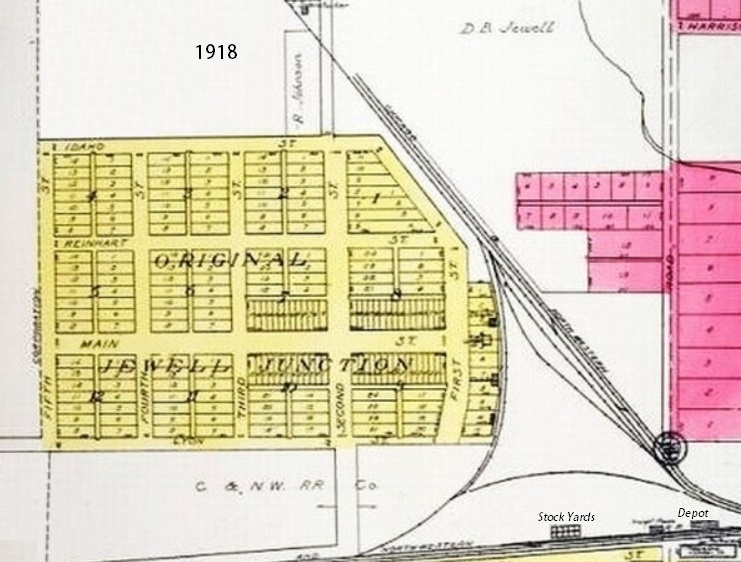
The Jewell post office was established on December 27, 1880. That post office was located about 40 rods south of the depot. Mrs. Laura E. Cooper served as the first of 14 postmasters during Jewell's first 100 years. The post office was never called Jewell Junction. John Foster served as the first rural mail carrier starting in 1903. The five digit zip code for Jewell was introduced on July 1, 1963.
The Jewell Telephone Company was started in 1902 by about 30 businessmen. Frank Snyder served as president. Within three years, the number of subscribers had grown to 125. In 1905 the Jewell and Ellsworth Telephone Company was created.
(This letter to Ostrem of Jewell Junction was
posted in 1890.)
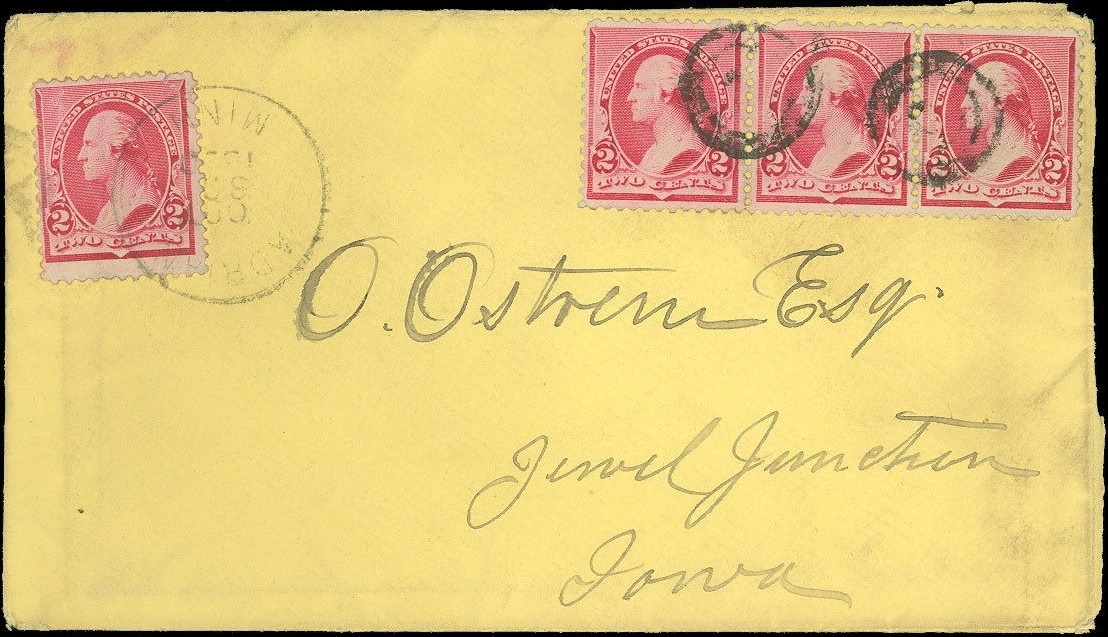
Did you know our town of Jewell celebrated a Centennial and because it was 100 years old?
Twenty five years after that centennial, another Jewell celebration was held, the Quasquicentennial.
|
|
|
many things, like the demand for ice, have changed. Before there were refrigerators and freezers, people kept food cool using ice, snow, or underground storage. In those days, the ice box was essentially an insulated box, typically white and about four to five feet high, with a receptacle in the bottom for accommodating a big block of ice. You put food and stuff into the shelves above the ice, and closed the door. The ice would keep the food from spoiling, but as the ice would melt, more ice would be purchased. Where did that ice come from? It was harvested from pools of water like creeks, rivers, or lakes that would naturally freeze in the winter season. Published November 20, 1913: Last week Smith & Wills sold their ice plant and business to George W. Foval and John W. Jewell, and will give possession next Monday. In the sale, Foval & Jewell get the property where Smith & Wills have conducted their business, including the ice house that is located on the tract, with the ice business that Smith & Wills have conducted. Published January 21, 1915: Sidenstucker & Company and Foval & Jewell (George W. Foval & John W. Jewell) were both putting up ice last week, filling their houses for next summer's use. Both are shipping in their ice from Webster City and are getting mighty fine ice. Foval & Jewell, who retail ice to families in town in the summer, are putting in 350 tons of ice. Published February 11, 1921: W. E. Morris, city dray monopolist, will furnish the inhabitants of this burg with frozen aqua next summer. He has leased the John W. Jewell ice house which has just been filled to the roof with the finest ice that has ever been packed in sawdust. The ice was "harvested" at Wall Lake, south of town, and that accounts for it. No finer ice can be found anywhere. It is as clear as crystal, as pure as nectar and as cold as zero. It took 8,000 cakes to fill the ice house. The cakes are two feet square by 100 inches thick. Some ice! Published January 16, 1922: John Jewell started work last week with a force of teams putting up ice for next summer's use. He is filling his ice house with some mighty fine ice which he is getting from the dredge ditch on the Carl Voss farm. Published February 2, 1922: Notice to all Ice Patrons: I have put up an abundant supply of ice for the coming season and will guarantee to furnish all throughout the season, will have a good man on the wagon and insure a square deal. Ice coupon books will be furnished in 1000 and 2000 pounds to be paid for when ice book is used up. Price will be reasonable. Thanking you in advance. John W. Jewell Published January 18, 1923: 444 pouds of ice were stored in the city supply house by John Jewell, which will take care of the ice demand for the coming summer. The ice was taken from the reservoir east of the Northwestern depot. The ice was of the finest that has ever been packed in storage here. Published January 1, 1925: Work was started last week harvesting the ice crop, John Jewell putting up ice in the railroad company's house. The ice was taken from the railroad company's reservoir. It is a good foot or better in thickness and it is unusually good quality this winter. An unusual thing occurred Wednesday of last week when the ment putting up ice had to quit work because of the cold. The temperature was so low that the saw would freeze in the ice. Published January 12, 1925: On Tuesday of this week John W. Jewell finished the job of harvesting the ice crop that will keep this community cool when the torrid days of summer come again. Ice was put up to fill three houses, those of the railroad company, the Dutten Hotel, and Mr. Jewell's own ice house. The cold weather of December that raised so much havoc with everybody's coal bins was a fine thing for the ice man. There probably never before was so good a crop if ice put up in Jewell as has been put up this winter. The ice, taken from the railroad company's reservoir, was of fine thickness, clear and clean and of unusually good quality. View this news article. John Winburn Jewell was one of
the nine children of David Talent Jewell and Drucilla (Rinehart) Jewell,
|
|
|
Of the many breeds of horses known around the world,
perhaps you recognise these common names of horse types:
Arabian, Appaloosa,
Clydesdale,
American Quarterhorse, Mustang, Thoroughbred,
Morgan
Horse.
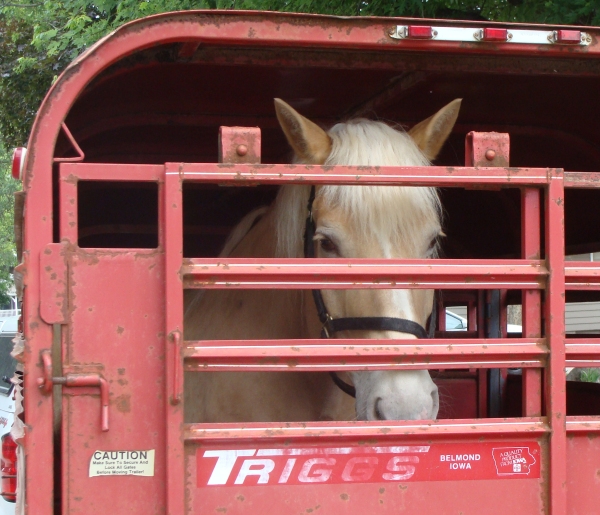
Did you know that one rather rare horse breed
was developed right here in the Jewell, Ellsworth,
and Radcliffe area with the help
of the early Jewell Veterinarian, Dr.
Erick Christian.
Chautauqua was a cultural and social movement that started in upstate New York in the 1870s and flourished until the mid 1920s. During this time, hundreds of touring chautauquas presented lectures, dance, music, drama, and other forms of “cultural enrichment”. The original Chautauqua movement was based on four pillars, which were used for many years. These four pillars are: Arts, Education, Recreation, and Religion. As a community, Chautauqua celebrates, encourages and studies the arts and treats them as integral to all of learning. With symphony, opera, theater, dance, visual arts and a renowned music school, Chautauqua produces an “eclectic mix” of programming that can be found nowhere else. While founders Lewis Miller and John Heyl Vincent were Methodists, other Protestant denominations participated from the first year onward, and today Chautauqua continues to be ecumenical — as well as interfaith — in spirit and practice.
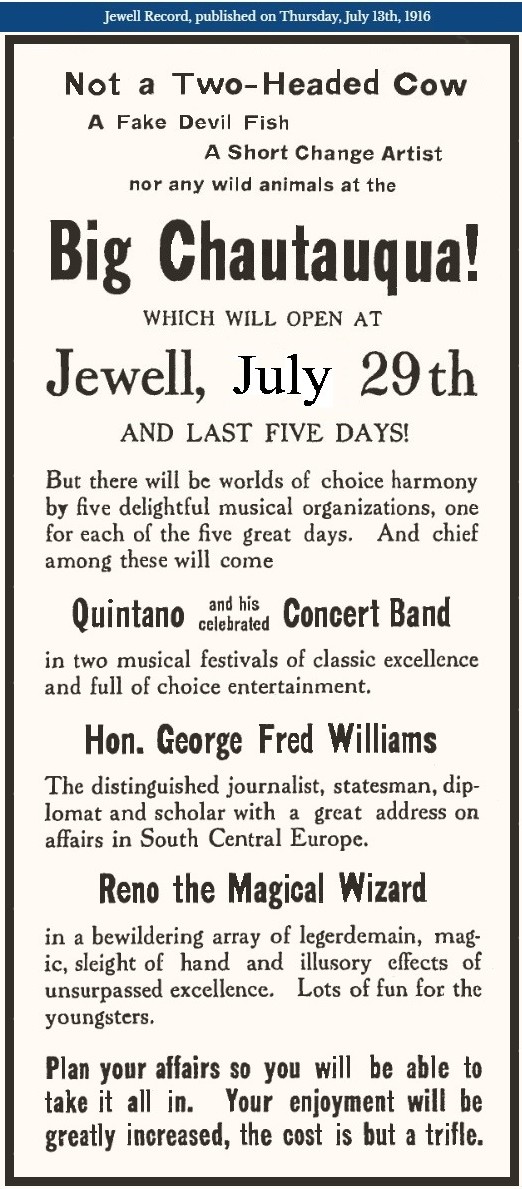
|
Did you know that as the town
of Jewell grew,
schools needed to change because
there was a need to accomodate more students?
One of the store buildings was moved from Callanan during the winter of 1881-1882. The reason buildings were moved in the winter was because they could be more easily put on skids and pulled by teams over the frozen ground. (This was true of so many buildings that were removed from the settlements of Lakins' Grove, Callanan, Hook's Point, and other towns that failed to attract a railroad.) This building was placed along Main Street. That first school was held in the rented back room, with William Anderson serving as the teacher. The next year, a school district was organized and the school was moved to a different building south of the railroad tracks. Anderson was the only teacher for one year. In 1883 Howard Smith was added to the school staff. By 1890, a whole block was purchased and a two-story brick structure was built. Two years later a four-year high school program was added. In 1905 an addition was constructed on both ends of the school.

|
This building took care of the school needs for another 20 years. |
 |
Did you know that once upon a
time,
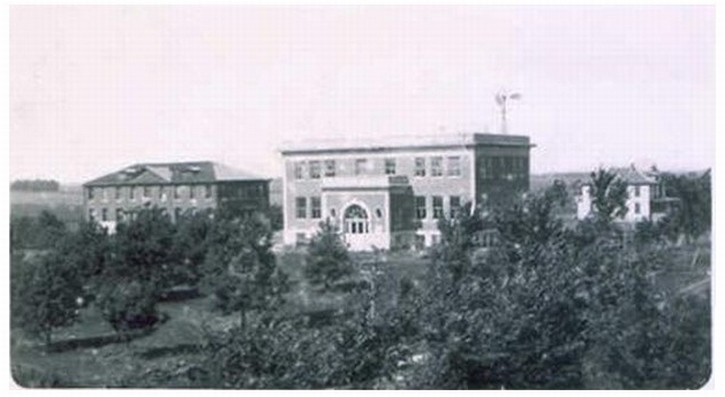
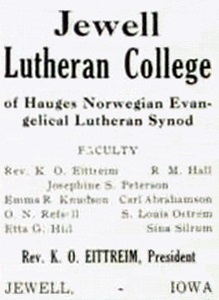 - - - - -
- - - - -  Yes, Jewell had the first college in Hamilton County. It was established in Jewell in 1893 by the Jewell Lutheran College Association. The majority of the members of this association were Scandinavian Lutherans from the surrounding counties. In 1897 it became apparent that larger support was needed for the school, so the college and all of its property was transferred to the Iowa District of the Hague Synod, under whose management the college grew and progressed in other ways. In 1902 a ladies' dormitory was constructed, but a year later the main college building burned, killing two students, Julius Peterson and Burton Millang. In February of 1904 it was decided to build a new Main Hall. Because many Lutheran Colleges had been established in Iowa and the declining enrollment made it harder to pay bills, it was decided to close Jewell Lutheran College in 1925 after 4,236 students had been served. The college property was purchased by the Jewell School District.
|
||
|
who owned the first automobile in town?
Dr. C. J. Christensen came to Jewell in 1902 just after he graduated from the College of Medicine at the University of Iowa. He operated his medical practice in Jewell until 1937. The start of his practice was in the days of the horse and buggy, and he did made house calls using his buggy. Dr. Christensen soon purchased the first automobile in Jewell, a red 1908 Maxwell, and could use it instead of his buggy. |
||
|
|
||
|
This ad was published in the Ellsworth News on July 22, 1964.
|
||
|
||
|
View a 1911 Jewell Record article which mentions five denominations.
Nine or ten churches have served Jewell over the years. Congregational Church…1884…
Main Street at the present UCC site Methodist Church...1883...
NE corner of King and Deckor Street, one block west of grocery Christian Church . . .
NE corner of Edwards and Deckor Street, two blocks west of Post Office. Federated Church . . . The
above three congregations merged and by 1933 were meeting in the Congregational
building on Main. In 1956, the congregation had their new current
building constructed. Assembly of God . . .
started as a Tent church, then moved the old Federated Church building
to the corner of Park and Main, just west of Casey’s. It is
now an apartment. The parsonage was just west. Bethesda Lutheran (Norwegian
Evangelical Lutheran) . . . 1887 church on current site at the corner
of Anderson and Main. Good Shepherd Catholic Church
. . . 1899 church on west side of Hoffman Street, just north of Harriet
Erickson’s house. Hoffman is now part of Collins Street when
it was pushed through from Edwards to Anderson and on to Johnson.
The Catholic Church then occupied the former Christian Church
at the NE corner of Edwards and Deckor. The new church building
was built there in 1972. Immanuel Lutheran (Lutheran
Brethren) . . . A 1951 basement church and parsonage next door east at
corner of Deckor and Park. Above ground wood frame church moved
on to basement from North St. Petri site two miles east and one
north of Randall in 1956. Now the home for the Jewell History
Museum. Victory Christian Fellowship Church . . . took over the Immanuel Lutheran building at Deckor and Park. A new church was built at the corner of East Lane and Anderson Street around 2014, and uses the former nursing home as their activity and learning center. This 1910 Postcard view of Deckor
Street in Jewell shows the Jewell Christian Church.
|
||
|
The image above shows a 1951 listing of shows to be seen soon at the Strand Theatre in Jewell.
|
||
|
News report on May 8, 1913 - Northwestern is contemplating building a two stall round house in Jewell. Trains 30 and 31 from Jewell to Tama lay over in Jewell and a round house is needed to house their engines nights.
|
||
|
and a town of Jewell and Randall in the state of Kansas? They are in the Kansas county named Jewell.
Jewell
County Historical Society (in Kansas) Facebook Page
|

David Jewell's town sat in the northwest part of today's town of Jewell. This was north of the east-west track to Ellsworth and Stanhope.) The original Main Street is now called Jewell Street. There was no unclaimed land just waiting for the buyers, because it was already owned by early Hamilton County settlers. These were the speculators or holders of military grants for their service in the War of 1912, the Mexican American War, or even the Civil War. Originally, Jewell Junction consisted of hastily thrown together sheds and shanties that either lined the east-west Main Street or sat to the north or south along Second, Third or Fourth streets. That original town began because there was railroad service planned there, and there was the potential for profit and settlement.
David Jewell platted the new town in 1880. Business lots were 25 feet wide by 130 feet deep, and sold for $100 each. Residential lots were 50 feet wide, and sold for $25. The town was ready for the railroad. In the agreement made by David Jewell with the Toledo and North Western Railroad on June 11, 1880 provided the land necessary for a depot, sidings, switches, shops, roundhouse, stockyards and the land necessary to form a junction. By December 1880 the Toledo and North Western had completed their line planned from Tama to Webster City, and started a second line west, forming new towns of Radcliffe, Ellsworth, Jewell and later forming Stanhope and Stratford; thus the junction at Jewell.
By 1900, David Jewell's portion of town was practically deserted because most growth was going south of the tracks and train station. Often referred to as Dog Town, the northwest corner of Jewell has seen a recent revival, especially since the centennial year of 1981 with a number of new homes built in the original Jewell. Reinhart Street even had to be reopened to accommodate several new houses.
Although the 1918 map (seen above) shows the Jewell city park at the southern edge of town, today there are now more that 26 homes south of that park. The Jewell city limit has been extended to the county road that meets the southern edge of the Jewell Municipal Cemetery. There are now nearly 30 newer homes located south of the Jewell Municipal pool and the Jewell City Park.
Did you know that Jewell was once within walking distance of several lakes.
And, of course, before entering
the automobile age, people used to walk farther than we do today.
Do you remember when nearly
all the town people would walk instead of drive to church?
Besides having Little Wall
Lake several miles to the south, Jewell long ago had two other nearby
lakes,
Goose Lake and Lake Cairo.
This 1930 map showing the southern
portion of Lyon Township indicates where the lakes are/were located.
Back when Jewell was formed,
walking was a common means to travel short distances,
so Jewell residents would walk
to these nearby lakes.
Things in Jewell and in the rest of the world keep changing!
This next advertisement was published in The Jewell Record on September 3, 1914.
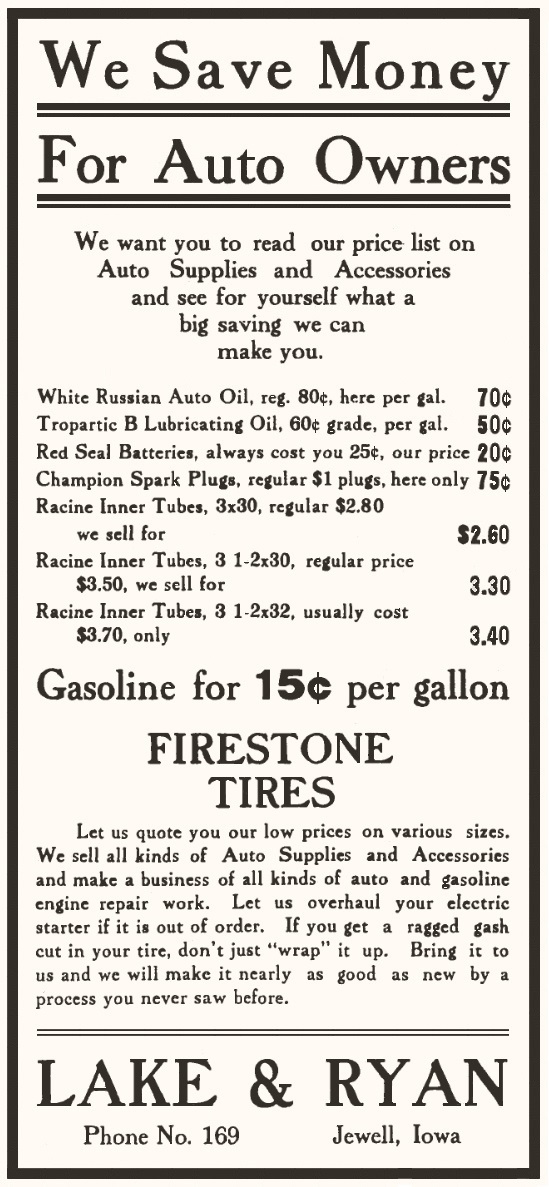
News report on May 11, 1933 - The Standard Oil Co. service station in Jewell led the way in a reduction in gasoline prices announced here Monday. Ethyl was cut 3.1 cents to 15.6; Red Crown was cut 2.6 cents to 13.1; and Stanolind was cut 4 cents to 12.1 cents a gallon, these prices including the 4 cent tax.